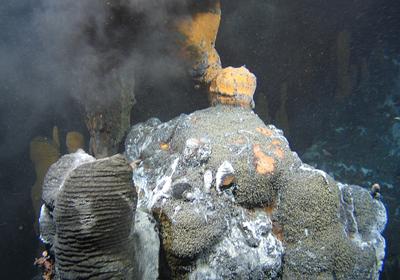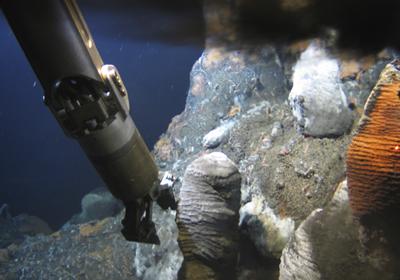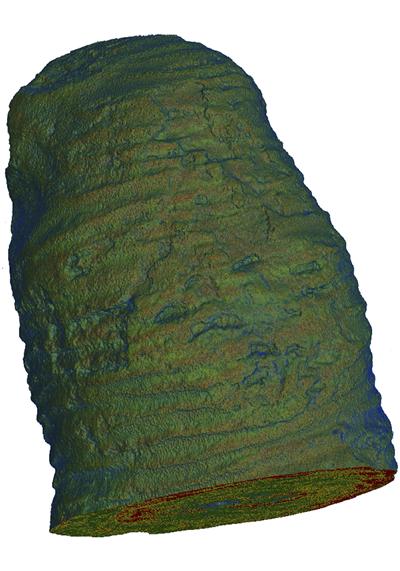A new hydrothermal vent system was discovered in 2011 in the northeast Atlantic. The vent site, Moytirra, was found by a joint Irish/UK team at a depth of 3000m on the Mid-Atlantic Ridge at 45°N. The vents are producing metal-rich fluids of 370°C and support abundant and exotic chemosynthetic fauna.
The mineral deposits have a very characteristic structure: bee-hive diffusers have a branching internal conduit or pipe that allows hot fluid to pass through the walls of the structure and precipitate new material on the outside.
The bee-hive diffuser vent is sampled by the Irish deep-diving ROV, 'Holland One'.
An X-Ray CT-Scanned density map of the beehive structure shows the exterior (blue/green colour) comprising a mixture of mineral densities and compositions (iron oxyhydroxides and sphalerite). At the base of the image the internal structure can be seen with concentric rings of pyrite (iron) and chalcopyrite (copper) sulphide.
The bottommost images show a 3D volume rendering of the X-Ray CT scan revealing the internal structure of the beehive diffuser vent. A central branching conduit (purple) feeds branching layers of high porosity (forming a 'christmas tree' structure). These in turn become alternating mineral layers with green, yellow and red indicating differing density and composition.



